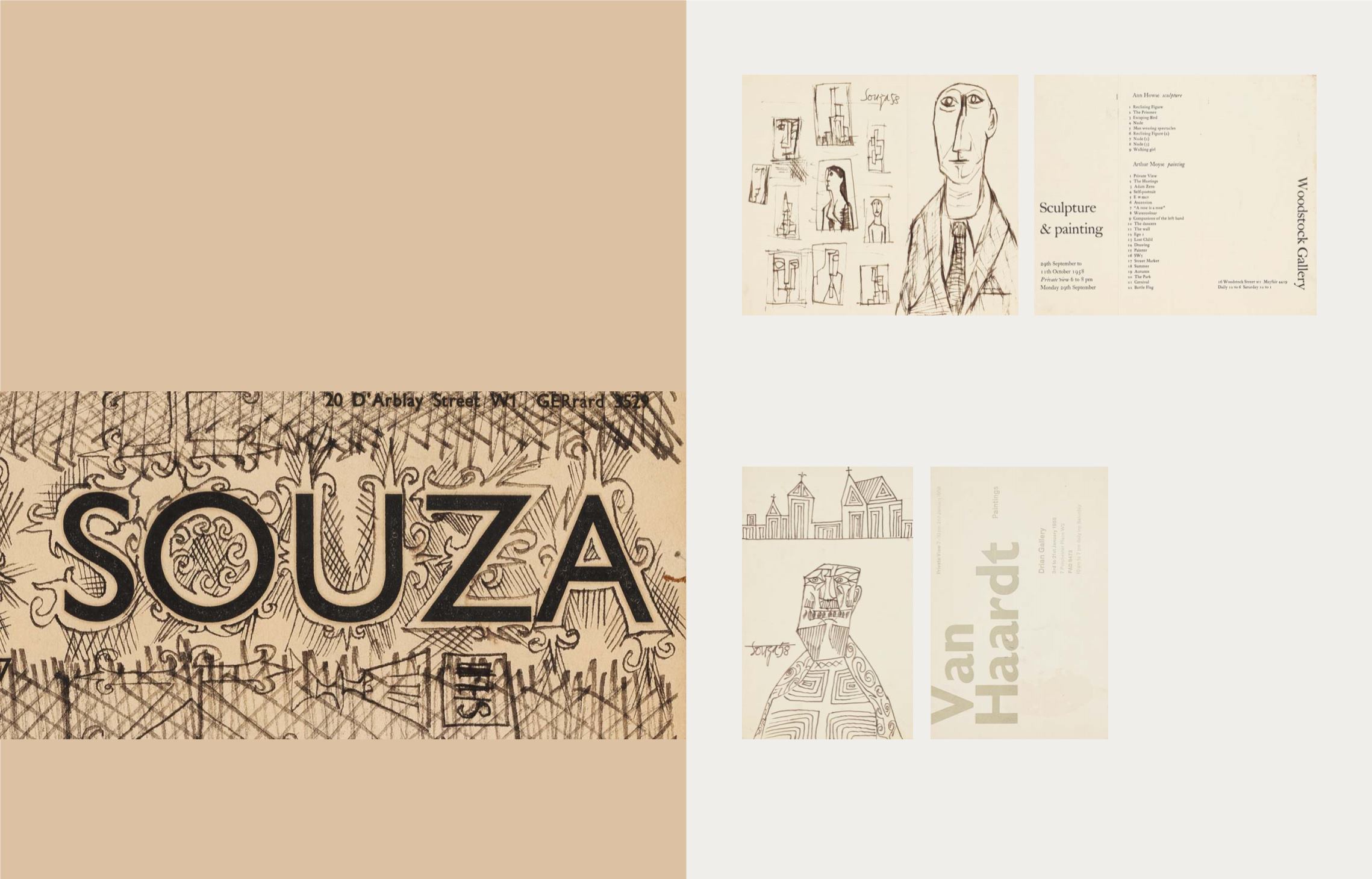

11
PROPERTY OF A GENTLEMAN
1
F N SOUZA
(1924 ‒ 2002)
a) Untitled
Signed and dated 'Souza 58' (upper centre)
1958
Pen on card
7.75 x 9 in (19.6 x 22.8 cm)
b) Untitled
Signed and dated 'Souza 58' (lower left)
1958
Pen on card
9 x 5.5 in (22.7 x 13.9 cm)
Rs 2,00,000 ‒ 3,00,000
$ 3,175 ‒ 4,765
(Set of two)
In September 1958, Souza received an invitation to a private viewing of the sculptures and paintings of Ann Howse and Arthur Moyse
at the Woodstock Gallery. The sketch on this invitation is atypical of Souza’s style. A suited man, possibly a wealthy art collector, is seen
viewing a cluster of paintings. Souza’s lines, while steady and confident, appear to have been drawn quickly, suggesting that he might
have spontaneously created this at the private viewing. Devoid of Souza’s crosshatchings and facial distortions, it is free of any scathing
commentary.
verso aSouza's sketch on this invitation to Polish artist Georges van Haardt's show at Drian Gallery was probably based on London's impressive
cathedrals. Drian Gallery was set up in 1957 at Porchester Place, Bayswater by Halima Nalecz, a Lithuanian immigrant who settled in
England in 1947. Nalecz represented artists including van Haardt, who were snubbed by the more well‒established galleries.
SOUZA SKETCHES ON INVITATION CARDS
LOTS 1‒4
The period between 1955 and 1961 saw Francis Newton Souza’s rise to critical and commercial success. His autobiography,
Nirvana of a Maggot,
was published in 1955, the same year he held his first one‒man show at Gallery One. From 1956 to 1960,
he received a regular stipend from Harold Kovner, a wealthy American collector, in exchange for a regular supply of paintings.
Empowered with greater artistic freedom, Souza created some of his best works during these years.
The following four lots, from 1958 and 1959, are fine examples of Souza’s prolific output. Made as drawings on the reverse of
invitation cards, they highlight Souza’s versatility. Souza often experimented with surfaces and mediums. With oil paints and
polyvinyl acetate, or chemical alterations on magazine paper, he transformed used and unused surfaces into cityscapes and
figurative drawings. The present lots also offer insight into Souza’s camaraderie with other migrants to England, whether artists,
writers, poets, photographers or art dealers, and the solidarity that existed between them.
b verso

















